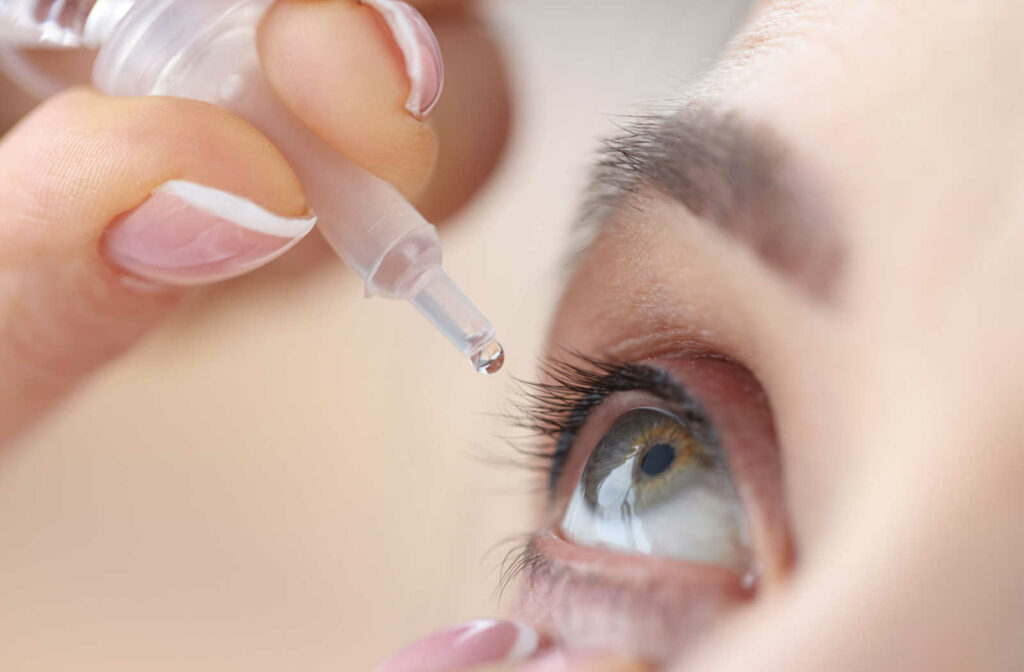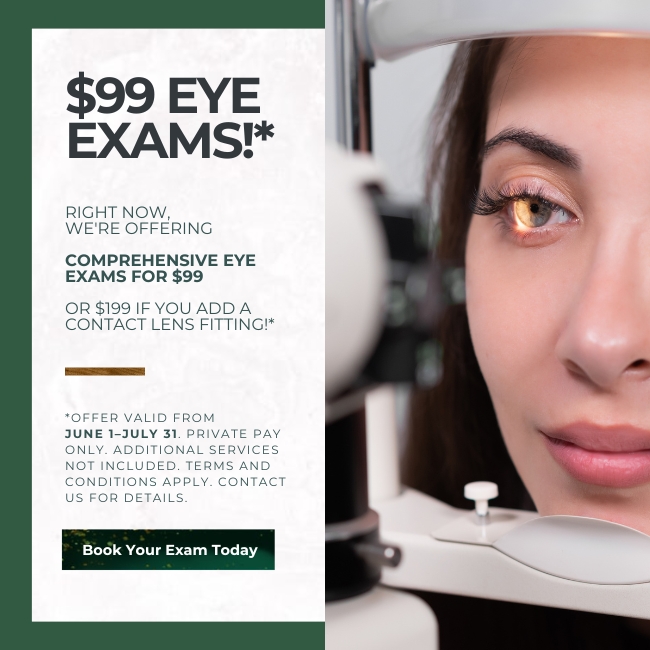Have you ever experienced dry eyes and blurry vision at the same time? If so, you might be wondering if these two things are related.
The short answer is yes—dry eyes can cause blurry vision. Your eyes need constant tears to keep them lubricated and comfortable. And if your eyes don’t produce enough tears or your tears evaporate too quickly, you may develop dry eyes.
Blurry vision is a common symptom of dry eyes, usually caused by dry eye disease. Comprehensive eye exams can help diagnose and treat dry eye disease to support clear and comfortable vision.
Let’s delve into dry eye disease and what it means if you also have blurry vision.
Dry Eye Disease
Your eyes need enough tears, and good-quality tears, to provide adequate lubrication. But when the glands in your eyes produce insufficient tears or tears lack the necessary components, it can lead to dry eyes, inflammation, and eye surface damage.
Some people wake up with dry eyes. Common reasons for this can be poor quality tears, not enough tears, or because the eyelids aren’t tightly closed when you’re sleeping.
Besides blurry vision, other symptoms of dry eye disease can include the following:
- Redness
- Stinging or burning sensation
- Eye pain or fatigue
- Light sensitivity
- Stringy mucus in or around your eyes
- A feeling of having something in your eyes
- Difficulty wearing contact lenses
- Difficulty with nighttime driving
- Watery eyes
Causes of Dry Eye & Blurry Vision
Dry eye disease can happen for many reasons, but each is related to an interference with a healthy tear film. The tear film is made of 3 components: water, oil, and mucus.
Causes of dry eye can include:
- The natural aging process
- Certain medications
- Medical conditions
- Allergies
- Eyelid problems
Several factors that can cause dry eyes and blurry vision include the following:
- Prolonged screen time
- Wearing contact lenses
- Dehydration
- Vitamin A deficiency
Treatment for Dry Eyes
So, what can you do if you’re experiencing dry eyes and blurry vision? The first step is to visit your eye doctor for an exam to help determine the cause of your symptoms and recommend the best treatment options.

Eye Drops
Over-the-counter eye drops or artificial tears can help treat chronic dry eye. If they don’t help manage symptoms, prescription eye drops are usually the next step.
Prescription Medicines
Prescription eye drops and antibiotics, taken by mouth, eye drops, or ointments, can help reduce inflammation in the eyelids or the eye’s surface.
Tear Duct Plugs
Tear duct plugs keep your tears from draining from the eyes too quickly. These plugs can be removable or permanent solutions to alter tear drainage.
Lifestyle Changes
Lifestyle changes or best practices to prevent dry eye symptoms can include:
- Taking breaks from screens or limiting screen time each day
- Quitting smoking or vaping
- Drinking more water to avoid dehydration
- Using a humidifier to add moisture to your environment
- Getting enough sleep, around 7 to 8 hours
- Warm compresses to clear clogged oil glands
- Avoiding environments with smoke, dust, wind, or air conditioning
- Vitamin A and omega-3 fatty acids supplements
- Wearing wraparound sunglasses to protect your eyes
Complications of Dry Eyes & Blurry Vision
It’s possible to have complications when dry eyes persist, usually without the implementation of treatment or prevention methods. These can include:
- Eye infections: Because tears help protect the eyes from bacteria and debris, lack of tears increases your risk of developing eye infections.
- Damage to the eye’s surface: Without treatment, dry eyes can become severe and may lead to inflammation, corneal ulcers, corneal surface abrasion, and in severe cases, vision loss.
- Decreased quality of life: Dry eye disease can make everyday tasks difficult, such as driving and reading.
If you experience the following accompanying symptoms with blurry vision and dry eyes, seek immediate attention from your eye doctor:
- Yellow or green discharge from your eyes
- Uncontrollable weeping from your eye that doesn’t stop
- Headache, nausea, eye pain, or fever
- Frequent headaches
- Consistent difficulty seeing things at a distance or close up
Dry Eye Relief for Clear & Comfortable Vision
If you’re experiencing dry eyes and blurry vision, know they are related, but they’re also treatable. Symptoms of dry eye disease can cause discomfort and affect your daily life, but you don’t have to live with the discomfort.
Book an appointment with Pacific Pier Optometry to determine the underlying cause of your symptoms and get the appropriate treatment. With proper care, you can see clearly and comfortably again!



